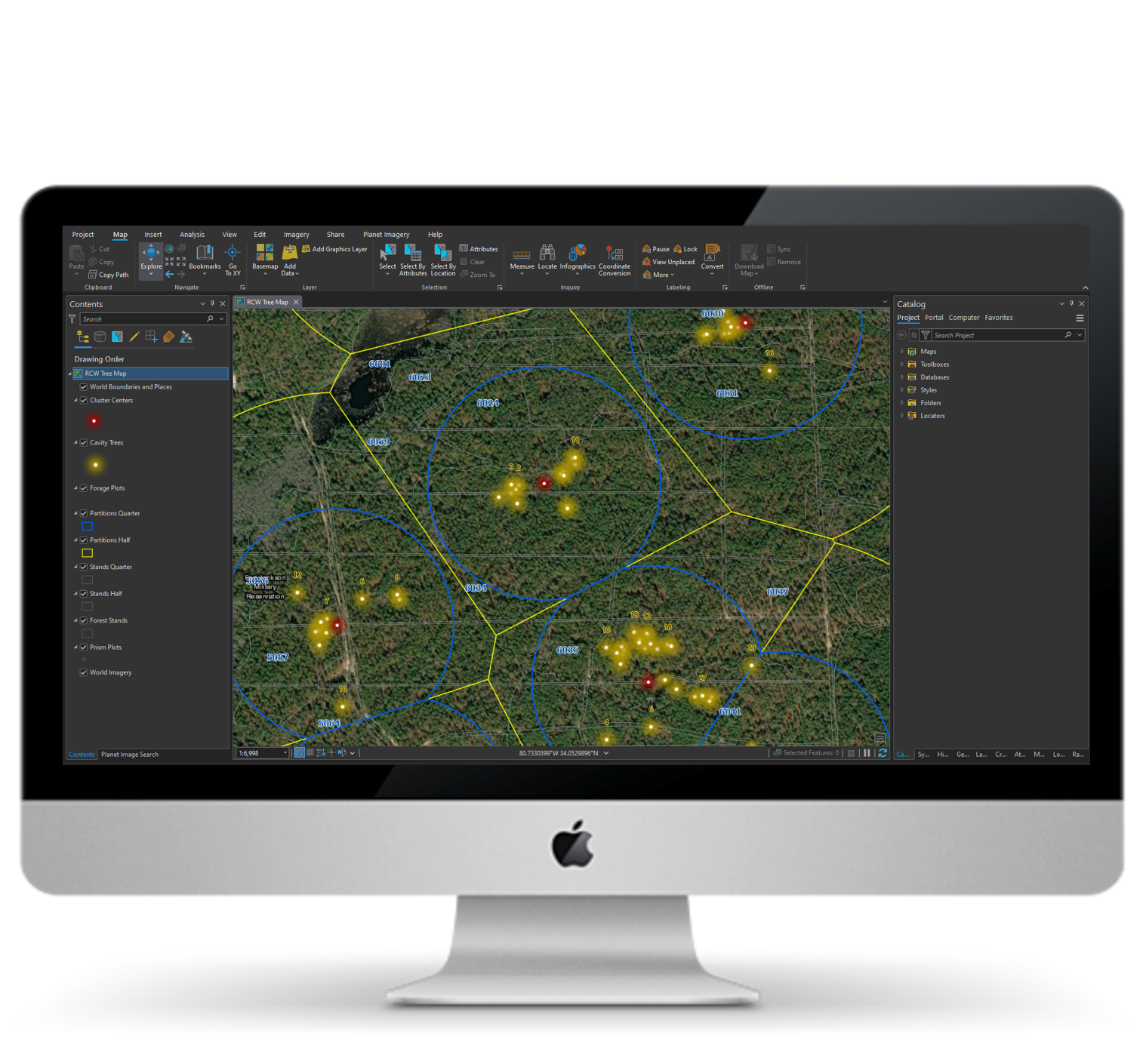Habitat recovery planning is an intricate process requiring field data collection and collaborations between foresters and biologists. Quantify habitat quality using a data driven process which is defensible, repeatable and automated.
Red-cockaded woodpecker (Picoides borealis) is a federally listed threatened species endemic to open, mature and old growth pine ecosystems in the southeastern United States (RCW Recovery Plan, 2nd Edition, US FWS). Both private and public organizations put significant resources into both managing existing RCW habitat or expanding populations, both of which involve forest management and specific silvicultural treatments.
The following sections provide more information on how our Forage Factor analytics toolset supports organizations in their work with RCWs by significantly improving the repeatability of analysis and saving labor time across all aspects of habitat data collection, reporting and analytics.

Teams charged with RCW management have the opportunity to improve outcomes through more predictable and reliable digital processes. Our strategy provides a real time view of program key performance measures from cavity tree status to analytical reporting.
In the modern workplace, information must be easy to find and use while being secure. As an Esri Business Partner working with numerous large agencies, we provide tools which meet IT standards and for years of trouble free operation.
Forage Factor is: